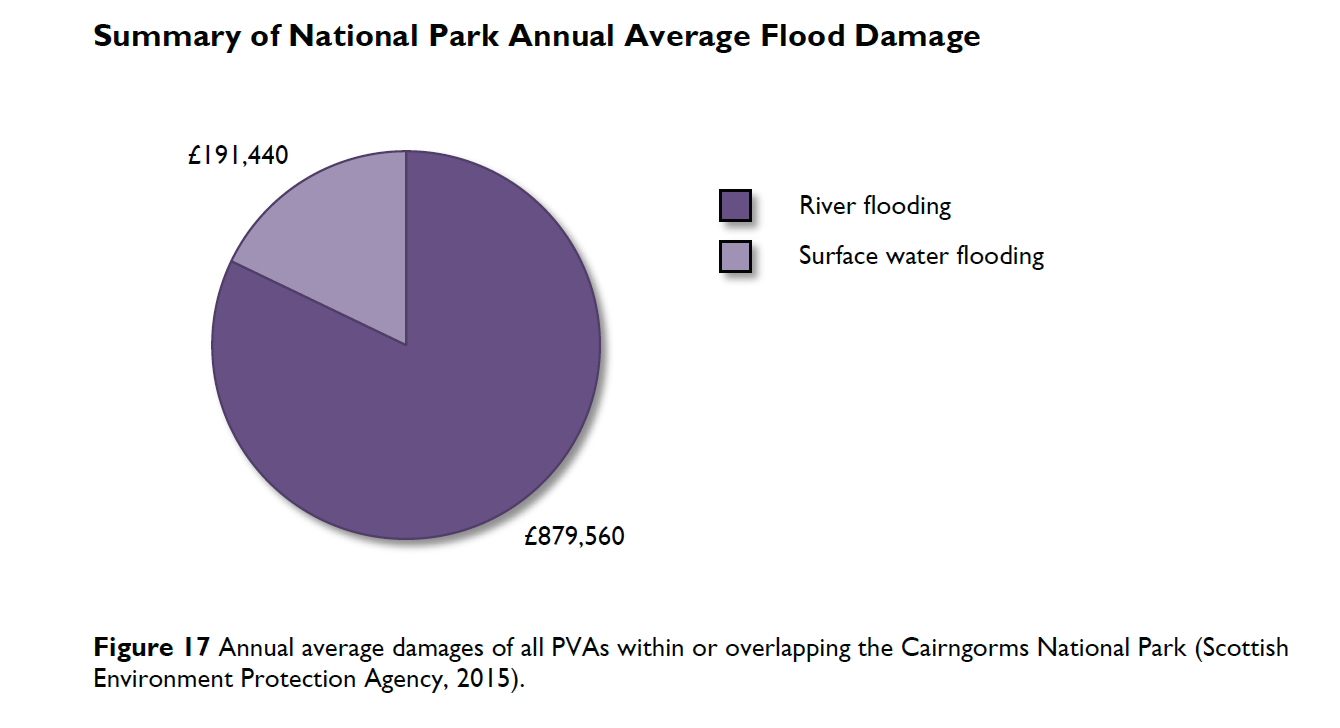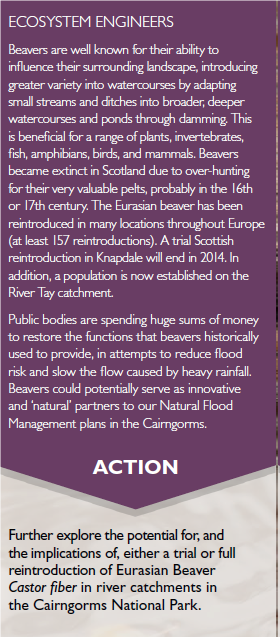On 24th November the Scottish Government finally announced it has agreed the permanent re-introduction of beavers to Scotland. Despite beavers being role in improving water quality, flood prevention and promoting more diverse habitiats and species, all objectives of the Scottish Government, the “decision” was far from a foregone conclusion. The whole process shows the power of landowning “interests” and prejudice. Over ten years ago, when I was on the Board SNH, the then Environment Minister (I can’t remember who, they change each year) was minded to approve their re-introduction but then some farmers had a word to a senior civil servant and we ended up with the five year re-introduction trial in Knapdale. Two years after the end of that trial the Scottish Government has at last considered the “evidence” and made its decision. An attempt to kick what should have been a simple species re-introduction into the long grass.
Meanwhile the unlawfully released but flourishing beaver population on Tayside showed the trial up for the farce it really was. I suspect that without this direct action a decision might never have been made. The Government’s announcement has made it clear that while they will allow beavers to expand naturally, there will be lots more bureaucracy before beavers are re-introduced anywhere else. Rob Edwards in the Sunday Herald quotes a Government spokesperson as saying “we have no plans to license the reintroduction further releases in the foreseeable future. We will also take swift action if another illegal release takes place – such an action constitutes a wildlife crime and carries serious potential penalties”. The lack of vision is lamentable.
The explanation for this lies with our farmers and landowners whose starting point appears to be that any wildlife, apart from that shot for sport, is a threat to their living and to the viability of “fragile” or “remote” local communities. This actually is the reverse of the truth but the Scottish Government is simply unwilling to challenge the dominant ideology that controls our countryside. What they should have said is that wanted to see further re-introductions over the next five years and that our two National Parks should be at the forefront of this.
Beavers and the Cairngorms National Park
It is good that Grant Moir, Chief Executive of the Cairngorms National Park Authority, welcomed the announcement. Rob Edwards quotes him as saying: “We will explore the potential for, and the implications of, beaver re-introduction in river catchments in the Cairngorms National Park” .
This is a step in the right direction. There was not a single mention of beaver re-introduction in the draft Cairngorms Partnership Plan, which was recently subject to public consultation along with the supporting papers on flood management and landscape scale conservation. This was a missed opportunity because they contain lots of information which supports the re-introduction of beavers into the Cairngorms National Park as a priority.

Looking at the flood threat to Aviemore and surrounds one cannot help thinking that re-introducing beavers into Glenmore, along with re-establishment of a montane scrub zone at Cairngorm, would help reduce risks considerably. The Cairngorm-Glenmore Strategy approved by the Park in September said nothing about beavers either.
The CNPA’s Flood Issues report quantified the amount of damage caused each year by flooding.

Our National Parks should place the objections that will inevitably be raised by farmers and landowners to beaver re-introduction into the wider context of the social cost of flooding and how current land management practices promote this (muirburn, drainage etc). The CNPA’s flood issues report suggested an ecosystems approach to prevent flooding but did not say HOW they would do this. The re-introduction of beavers should be part of the answer.
There is further supporting evidence in the Flood Issues report on water quality. Its always a surprise to see that the water quality in our National Parks is not 100% good. Beaver dams of course help improve water quality.

While not in the draft Partnership Plan, the CNPA has in fact in the past done quite a bit of work on species reintroduction. The quote above is from the Cairngorm Nature, 2013-18. The Action at the bottom is very cautious, in fact Grant Moir gave almost exactly the same form of words “explore the potential” to the Sunday Herald.
In fact in 2013, the CNPA Ecology Adviser, David Hetherington, produced a report on the potential to re-introduce vertebrate species, into the National Park. This went as far as to identify two priority areas for their re-introduction in the National Park, Insh Marshes and Dinnet. The CNPA therefore has done lots of preparatory work, I am not sure there is any need to “explore” beaver introduction further, what is needed is that negotiations need to start to make it happen. It should be performance indicator for the next Park Plan: the re-introduction of beavers at two sites, one on west and one on east of the National Park, within the next five years. And if the landowners don’t co-operate the land should be secured through compulsory purchase.

I understand Chief Executives have to be cautious but it really is time that the CNPA started to give a strong lead on this.
Beavers and the Loch Lomond and Trossachs National Park
The LLTPNA appears to have done less work on species re-introduction than the CNPA. There is nothing in their current Partnership Plan for example about species re-introduction although their plan for wildlife, WildPark 2020, does contain some aspirational statements:
Conversely, recolonising native species such as beaver are valued for the role they play in
our natural heritage.
The Tay catchment beaver population has expanded into the National Park at Loch Earn and Glen Dochart and is managed sympathetically to prevent damage to fisheries and forestry production, whilst also providing a significant new attraction to tourists and habitat benefits such as coppicing and pond creation in acceptable locations.
The problem, as in the Cairngorms National Park, is what will be “acceptable locations” to landowners. The Royal Scottish Zoological Society, which was involved in the Knapdale re-introductions has said it would be ideal if the beaver populations there could be joined up with the beavers on Tayside. The LLTNP sits between the two and there is a great opportunity to build on their recognition that the Tay population could expand into the National Park.
I have my doubts that they will do this without public pressure. All the LLTNPA’s focus and resources at present is being diverted to prevent people from camping rather than doing anything visionary.
The wider role of our National Parks in beaver re-introduction
Our National Park have a statutory duty to promote conservation, sustainable use of resources and sustainable economic development. Beavers are a great opportunity to do this, to do something that would be visionary for Scotland for a change.
In other countries none of this would be complicated. In North America there are jobs in beaver management (in the few places where beaver dams have adverse consequences there are specialist firms who have invented all sorts of ingenious solutions). Our National Parks should be taking that learning from abroad and applying it to Scotland.
Everything I have read and observed convinces me that it could only benefit the whole natural environment if beavers were encouraged within the Loch Lomond and Trossachs national park. If that park is truly about restoring some natural landscapes and environments and not actually about attracting tourists and making money (though the two are not necessarily mutually exclusive) then I would love to see some positive action on the part of the Park authorities. I am already enjoying the change in the nature of the woodland in the park, lets not stop there! (I live in Edinburgh)
Two years down the track and still no sign of movement on beaver introduction in Cairngorms or Lomond/Trossachs, as far as I can see. My view is that patience is wearing thin, and it’s about time introductions happened, one way or another.